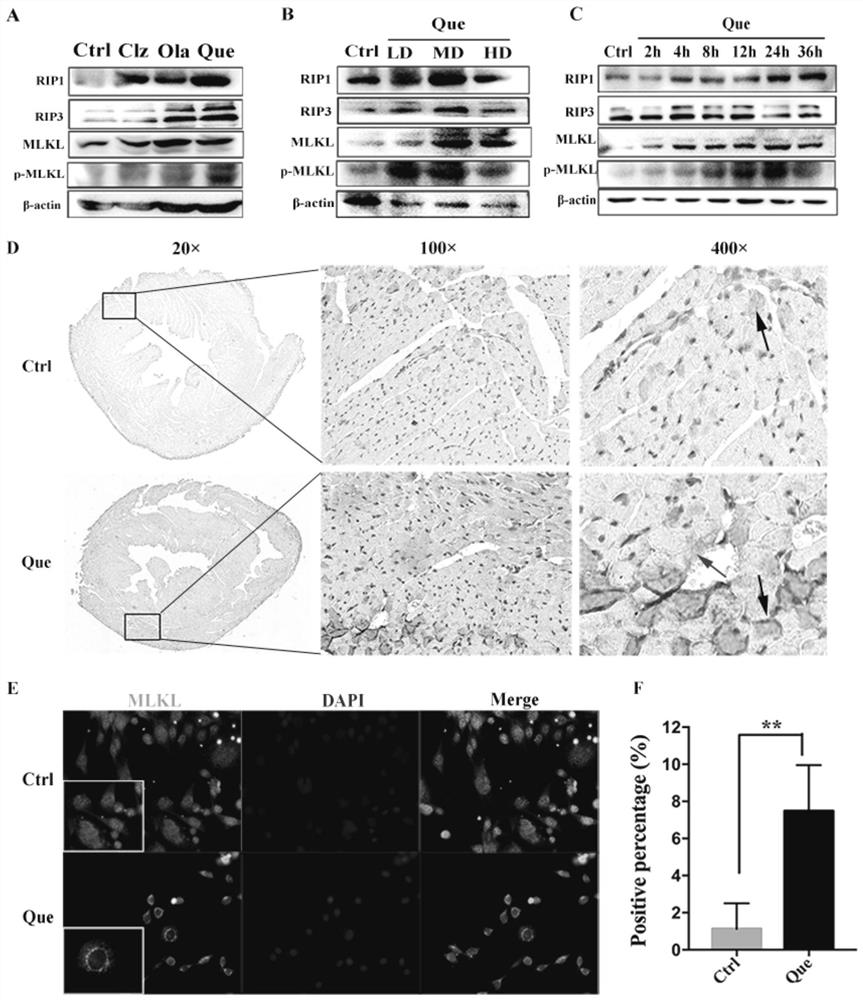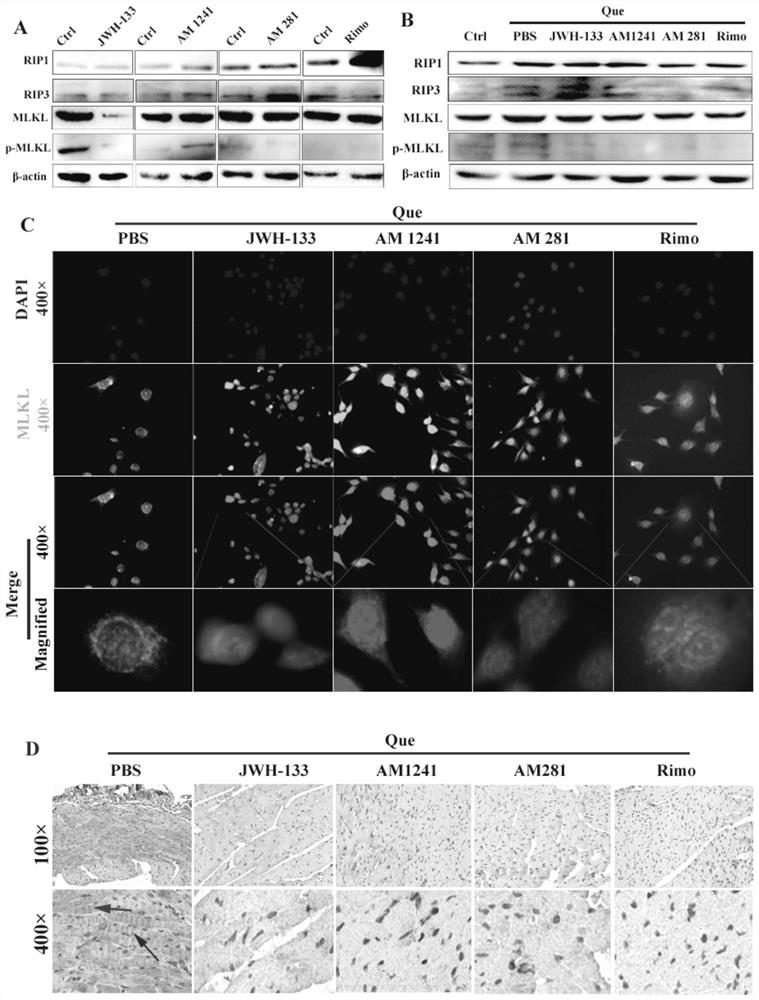Application of cannabinoid receptor drug in preparation of drug for treating myocardial cell necrosis apoptosis
A technology of cannabinoid receptors and necroptosis, applied in the field of biomedicine, can solve the problems of less research on toxicological mechanisms
- Summary
- Abstract
- Description
- Claims
- Application Information
AI Technical Summary
Problems solved by technology
Method used
Image
Examples
Embodiment 1
[0053] Example 1 Chronic exposure of quetiapine induces cardiotoxicity in vivo and in vitro
[0054] Antipsychotics have been widely reported clinically to prolong the QT interval and even lead to sudden cardiac death. Histopathological changes in quetiapine cardiotoxicity are still rarely reported. In our experimental study, we injected mice intraperitoneally with 60 mg / kg quetiapine (comparable to clinical therapeutic dose). After 21 days of continuous treatment, mouse hearts were harvested for histological analysis. Compared with PBS-treated control hearts, H&E staining showed that quetiapine-treated hearts showed more obvious accumulation of multifocal inflammatory cells. PicroSirius Red (PSR) staining further revealed significant accumulation of fibrous connective tissue in the perivascular and interstitial regions of quetiapine-treated hearts. The ratio of heart weight to tibial length (HW / TL) is an index reflecting myocardial interstitial edema and heart disease. Th...
Embodiment 2
[0055] Embodiment 2 Quetiapine induces cardiomyocyte necroptosis
[0056] Given that quetiapine induced mitochondrial swelling, cell membrane disintegration, and endoplasmic reticulum dilation, consistent with necrotic changes. Necroptosis is characterized by cascade activation of RIP and phosphorylation of MLKL and eventual translocation to the cell membrane leading to membrane pore formation, three common atypical antipsychotics (clozapine, olanzapine and quetiapine) treated cardiomyocytes, and detection of necroptosis activation, the results showed that any drug can increase the expression of RIP1, RIP3 and MLKL and phosphorylated MLKL (p-MLKL), especially quetiapine Ping has the strongest promoting effect on the expression of necroptosis pathway-related proteins ( figure 1 A), showing that quetiapine induces necroptosis. We then incubated myocardial HL-1 cells with different doses of quetiapine ( figure 1 B) or incubated with the same concentration of quetiapine for dif...
Embodiment 3
[0057] Example 3 Quetiapine has little effect on apoptosis and autophagy pathway
[0058] The present invention studies the effect of quetiapine on other types of cell death; cells are incubated under the same conditions as above; apoptotic markers such as caspase 3 (caspase3) and Bcl-2 are treated with different quetiapine The conversion of LC3B-I to LC3B-II is a sign of autophagy activation. The present invention observed that the level of LC3B-II increased very slightly under different doses of quetiapine or different treatment times. In all different treatments, Beclin 1 did not change significantly.
PUM
 Login to View More
Login to View More Abstract
Description
Claims
Application Information
 Login to View More
Login to View More - R&D Engineer
- R&D Manager
- IP Professional
- Industry Leading Data Capabilities
- Powerful AI technology
- Patent DNA Extraction
Browse by: Latest US Patents, China's latest patents, Technical Efficacy Thesaurus, Application Domain, Technology Topic, Popular Technical Reports.
© 2024 PatSnap. All rights reserved.Legal|Privacy policy|Modern Slavery Act Transparency Statement|Sitemap|About US| Contact US: help@patsnap.com









